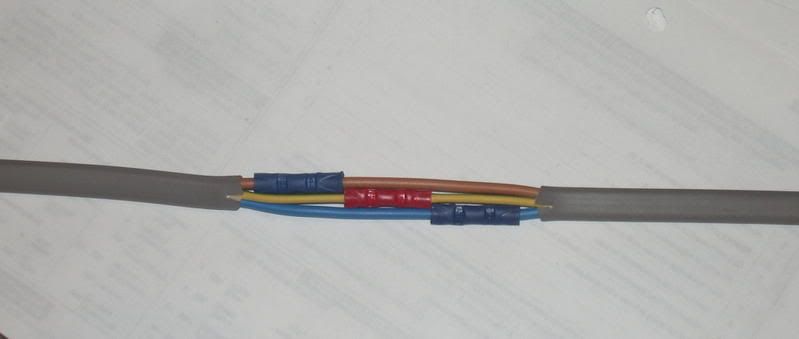I'm sure I must be reading some of the posts wrong here but is it correct that's it permissible to through-crimp 2.5mm T and E ? I've already got a very good pair of ratchet crimpers bought from Vehicle Wiring Products that will handle up to 4mm cable but I just find it a little hard to swallow that it's allowable to use mechanical crimps on cable carrying mains voltage, especially when it's solid core, not stranded.
Coming from a BT background, I would've thought that there might be some form of heavy-duty IDC connector out there to fulfill the role ?
Can somebody give me a definitive answer to this please as if it's correct, it will make my new CU fitting a HELL of a lot easier for the two rings that won't reach the new CU position.
Also, are the connectors to be colour-coded. Brown - Live etc.
Thanks.
edit> forgot to add, is it OK to have these crimped joints inside plastic 1" trunking ? I want to lead all the cables through this trunking to make a better job.
Coming from a BT background, I would've thought that there might be some form of heavy-duty IDC connector out there to fulfill the role ?
Can somebody give me a definitive answer to this please as if it's correct, it will make my new CU fitting a HELL of a lot easier for the two rings that won't reach the new CU position.
Also, are the connectors to be colour-coded. Brown - Live etc.
Thanks.
edit> forgot to add, is it OK to have these crimped joints inside plastic 1" trunking ? I want to lead all the cables through this trunking to make a better job.




